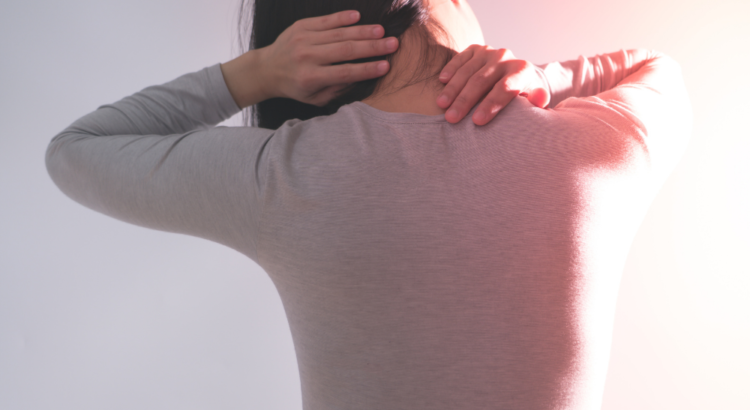When it comes to alternative therapies for pain relief, stress reduction, and overall wellness, cupping and massage therapy are two popular treatments that many people explore. While both share similarities in their holistic approach and focus on improving the body’s natural healing processes, they differ significantly in their techniques, effects, and benefits. Understanding these differences can help you decide which therapy is right for you or how they might complement each other in your wellness routine.
What Is Massage Therapy?
Massage therapy is a hands-on technique where a licensed therapist manipulates the muscles, connective tissues, tendons, and ligaments to promote relaxation, reduce muscle tension, and improve circulation. This therapy has been practiced worldwide for thousands of years and has evolved into many styles, including Swedish massage, deep tissue massage, trigger point therapy, and more.
How Does Massage Therapy Work?
The therapist uses different strokes, pressure levels, and techniques to target specific areas of discomfort or tightness. By increasing blood flow and encouraging lymphatic drainage, massage therapy helps reduce inflammation, ease pain, and speed up the recovery of injured tissues.
Benefits of Massage Therapy
- Relief from muscle tension and stiffness
- Improved circulation and oxygen flow to tissues
- Stress reduction and enhanced relaxation
- Increased flexibility and range of motion
- Reduction of headaches and chronic pain symptoms
What Is Cupping Therapy?
Cupping therapy is an ancient healing practice that involves placing suction cups on the skin to create negative pressure. This suction pulls the skin and underlying tissues upward into the cup, which can increase blood flow, promote lymphatic drainage, and stimulate the body’s natural healing responses.
Cupping is often associated with Traditional Chinese Medicine (TCM) but is also found in other cultures, including Middle Eastern and Eastern European healing traditions.
How Does Cupping Work?
There are several types of cupping techniques:
- Dry cupping: Cups are applied with suction but no bloodletting.
- Wet cupping: Small incisions are made on the skin before suction, allowing a controlled release of blood.
- Fire cupping: Uses heat to create suction inside the cup before placing it on the skin.
The suction pulls toxins to the surface, improves circulation, and relieves muscle tension in a different way from massage.
Benefits of Cupping Therapy
- Relieves muscle pain and stiffness
- Reduces inflammation and promotes healing
- Enhances circulation and lymphatic flow
- Supports detoxification of the body
- May improve respiratory function and reduce anxiety
Key Differences Between Cupping and Massage Therapy
Technique
- Massage Therapy: Involves direct manipulation of muscles and soft tissues using hands, fingers, elbows, or tools.
- Cupping Therapy: Uses suction created by cups on the skin to draw tissues upward. No kneading or rubbing is involved.
Sensation
- Massage Therapy: Can range from gentle to firm pressure, often feeling soothing or deeply relaxing.
- Cupping Therapy: Typically creates a pulling or tight sensation on the skin; some people may experience temporary bruising or marks where cups were placed.
Treatment Areas
- Massage Therapy: Can be applied to almost any part of the body including back, neck, arms, legs, and feet.
- Cupping Therapy: Usually focused on larger muscle groups and areas of pain or stagnation, such as the back, shoulders, and thighs.
Purpose and Effects
- Massage Therapy: Focuses on muscle relaxation, stress relief, and improving soft tissue function.
- Cupping Therapy: Targets circulation and detoxification, stimulating deeper tissue and fluid movement.
When to Choose Massage Therapy
Massage therapy is ideal for anyone seeking:
- Relief from muscle tightness or soreness
- Stress reduction and relaxation
- Improved flexibility and joint mobility
- Support for chronic pain conditions such as fibromyalgia or arthritis
- A nurturing, hands-on healing experience
Many clients find massage beneficial after intense physical activity or during periods of high stress.
When to Choose Cupping Therapy
Cupping therapy may be the right choice if you are looking to:
- Reduce muscle inflammation or stiffness quickly
- Stimulate blood flow to areas with poor circulation
- Detoxify the body by promoting lymphatic drainage
- Support respiratory health or alleviate tension headaches
- Try a traditional, alternative healing technique
Cupping is often combined with massage therapy for a comprehensive approach to wellness.
Combining Cupping and Massage Therapy
At Sean’s Massage Center, many clients benefit from a combination of cupping and massage therapy during the same session or in a tailored treatment plan. Using cupping first can loosen muscles and improve circulation, which prepares the body for a deeper and more effective massage. Conversely, massage therapy can relax muscles and ease tension, making the cupping process more comfortable and beneficial.
Our skilled therapists evaluate your condition and goals to design a treatment that integrates both therapies, maximizing your results.
What to Expect During Your Session at Sean’s Massage Center
When you visit Sean’s Massage Center, you will receive a thorough assessment from a licensed therapist to determine which therapy or combination is best suited for your needs. Our calm, professional environment is designed to promote healing and relaxation.
During your cupping session, you may experience a gentle pulling sensation and mild redness or circular marks that fade within a few days. Massage therapy sessions focus on comfort and will be adjusted based on your pain tolerance and preferences.
Call (614) 327-4338 to book your appointment today or to speak with our knowledgeable staff about which therapy fits your wellness journey.
Safety and Considerations
Both cupping and massage therapy are generally safe when performed by trained professionals. However, they may not be suitable for everyone. People who are pregnant, have bleeding disorders, skin infections, or certain chronic conditions should consult their healthcare provider before undergoing these treatments.
At Sean’s Massage Center, we maintain strict hygiene protocols and customize care plans to ensure your safety and comfort at all times.
Conclusion
Cupping and massage therapy each offer unique benefits and techniques for improving your physical and emotional well-being. Whether you choose one or combine both, these therapies can be powerful tools in your wellness routine.
To explore how cupping and massage therapy can help you feel better and live healthier, contact Sean’s Massage Center at (614) 327-4338. Our experienced therapists are here to guide you every step of the way toward lasting relief and relaxation.
FAQs
What types of therapy does Sean’s Massage Center offer?
Sean’s Massage Center provides a variety of therapies including massage therapy, cupping therapy, deep tissue massage, trigger point therapy, and more. Their licensed therapists tailor treatments to meet individual needs for pain relief, relaxation, and wellness. For appointments or questions, call (614) 327-4338.
How do I book a cupping or massage therapy session at Sean’s Massage Center?
You can book your session by calling Sean’s Massage Center directly at (614) 327-4338 or visiting their website. They offer flexible scheduling and consultations to ensure you receive the best care tailored to your health goals.
Is cupping therapy safe at Sean’s Massage Center?
Yes, cupping therapy at Sean’s Massage Center is performed by trained professionals following strict safety and hygiene protocols. They assess your medical history to ensure cupping is appropriate for you. For personalized advice, call (614) 327-4338.
What is the difference between cupping and massage therapy?
Massage therapy involves manual manipulation of muscles and soft tissues to reduce tension and improve circulation, while cupping uses suction cups to stimulate blood flow and promote healing. Both therapies offer unique benefits depending on your needs.
Can cupping therapy cause bruising or marks?
Yes, cupping can leave circular marks or mild bruising on the skin, which usually fade within a few days. These marks are a normal response to the suction and indicate increased blood flow to the area.
How long does a typical massage therapy session last?
A typical massage therapy session lasts between 60 to 90 minutes, depending on your treatment plan and goals. Shorter or longer sessions may also be available based on your preferences.
Are cupping and massage therapy covered by insurance?
Insurance coverage for cupping and massage therapy varies widely depending on your provider and plan. It’s best to check with your insurance company about coverage and reimbursement options.
Who should avoid cupping therapy?
People who are pregnant, have bleeding disorders, skin infections, or certain chronic conditions should consult a healthcare provider before receiving cupping therapy to avoid any risks.
Can I receive cupping and massage therapy during the same session?
Yes, many clients benefit from combining both therapies during the same visit for enhanced relief and healing. Therapists will customize your session for maximum comfort and effectiveness.
How soon will I feel results after cupping or massage therapy?
Many people feel immediate relaxation and pain relief after a session, but optimal benefits often develop with multiple treatments over several weeks. Your therapist will guide you on the best frequency for your condition.







